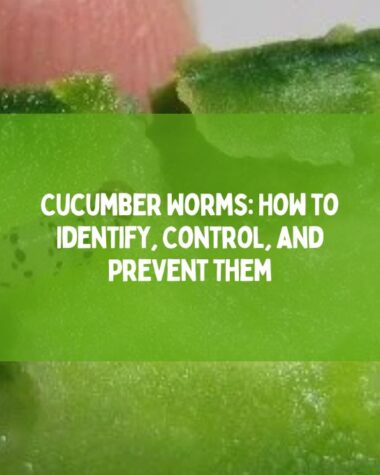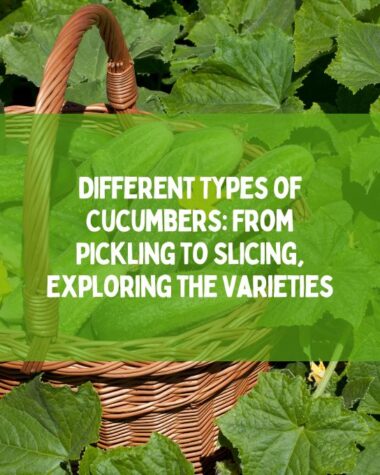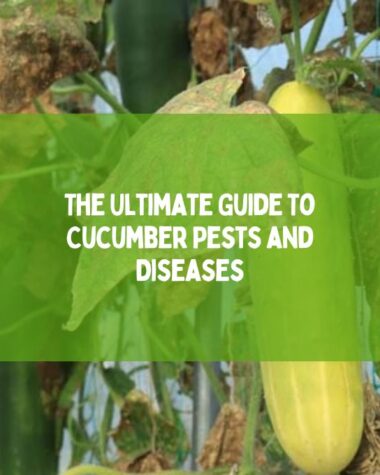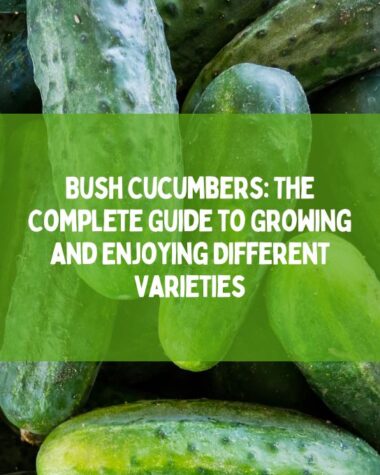Cucumber Mosaic Virus (CMV) is a common plant virus that can infect over 1,000 plant species, including cucumbers, tomatoes, peppers, and many ornamental plants. It is a serious disease that can cause significant yield losses in commercial crops, as well as in home gardens.
CMV is highly contagious, spreading rapidly through infected plant material and insects, such as aphids. It is important to be aware of the symptoms, treatments, and prevention strategies for CMV to protect your crops
In this article, I shall discuss the symptoms, treatment, and prevention of the Cucumber Mosaic Virus.
What is Cucumber Mosaic Virus (CMV)?
CMV (Cucumber Mosaic Virus) is a mosaic virus often spread by aphids, the most common type of mosaic virus. There are many different strains of this virus. They differ in the types of hosts they infect, the symptoms they cause, and how they spread.
The name “CMV” implies that the cucumber mosaic virus affects cucumbers. However, it can also affect other garden plants, including melons, squashes, eggplants, tomatoes, peppers, potatoes, and lettuce.
Without treatment, CMV-infected plants can spread the mosaic virus to other plants, which can even result in the loss of an entire crop.
What Causes Cucumber Mosaic, And Where Does It Come From?
Cucumber mosaic is caused by a virus called Cucumber mosaic virus (CMV). There is a possibility of the virus overwintering in biennial or perennial weeds that are susceptible. It can also survive in perennial crops like alfalfa as well as in perennial herbaceous and woody ornamentals. CMV can be transmitted through seeds and even pollen from infected plants.
Image Source: ctahr
The most common way CMV is spread is through aphids, which pick up the virus while feeding on infected plants and then transmit it to healthy plants. Over 80 species of aphids can transmit CMV. The severity of the disease depends on the size and activity of aphid populations in the area and the number of infected plants serving as reservoirs for the virus.
Related Reading:
- The Ultimate Guide To Cucumber Pests and Diseases
- Why are Cucumber Leaves Wilting and Dying? Reasons and Solutions
Cucumber Mosaic Virus Symptoms
CMV can cause a wide range of symptoms in plants, depending on the plant species and the severity of the infection. In general, the symptoms of CMV include:
- Mottling or mosaic patterns on leaves
- Stunted growth
- Yellowing of leaves
- Deformed leaves, fruits, or flowers
- Leaf curling
- Necrosis or death of infected tissue
The symptoms of CMV can be easily confused with those of other plant viruses, such as Tomato Mosaic Virus and Potato Virus Y. Therefore, it is important to get a proper diagnosis before starting any treatment.
What Can I Do To Prevent Cucumber Mosaic Problems?
Problems with cucumber mosaic can be avoided with a combination of preventive steps, such as cultural practices, insect control, and taking care of plants the right way. By following the guidelines for prevention, you can help protect your plants from this devastating disease and ensure a healthy and productive garden.
Here are some steps to avoid cucumber mosaic problems:
- Buy certified, virus-free seeds and plants.
- Consider using CMV-resistant varieties of vegetables like lettuce, spinach, cucurbits (such as cucumber, melon, and squash), and other vegetables.
- Check seed catalogs for information on CMV resistance to help with variety selection.
- Remove weed hosts from the garden.
- Mulch vegetable and ornamental gardens to limit weed growth.
- Use floating row covers to prevent aphids from reaching susceptible plants.
Don’t use insecticides to get rid of aphids because they won’t work fast enough to stop aphids from spreading CMV. And they may even make aphids move around and eat more, which will help the virus spread more.
Related Reading:
- 5 Effective Strategies to Control Weeds While Growing Cucumbers
- Can Frost-Damaged Young Tomato Plants Be Saved?
- 5 Most Common Tomato Stem Problems: And How to Fix Them
Final Thoughts
In conclusion, the Cucumber Mosaic Virus is a serious disease that can cause both commercial crops and home gardens to lose a lot of their yield. Although there is no cure for the virus, there are several ways to manage the disease and reduce its impact on plant growth and yield.
Preventing the virus is the best way to manage the disease, and it can be achieved through good hygiene, disease-free seeds and plants, aphid control, and physical barriers.







